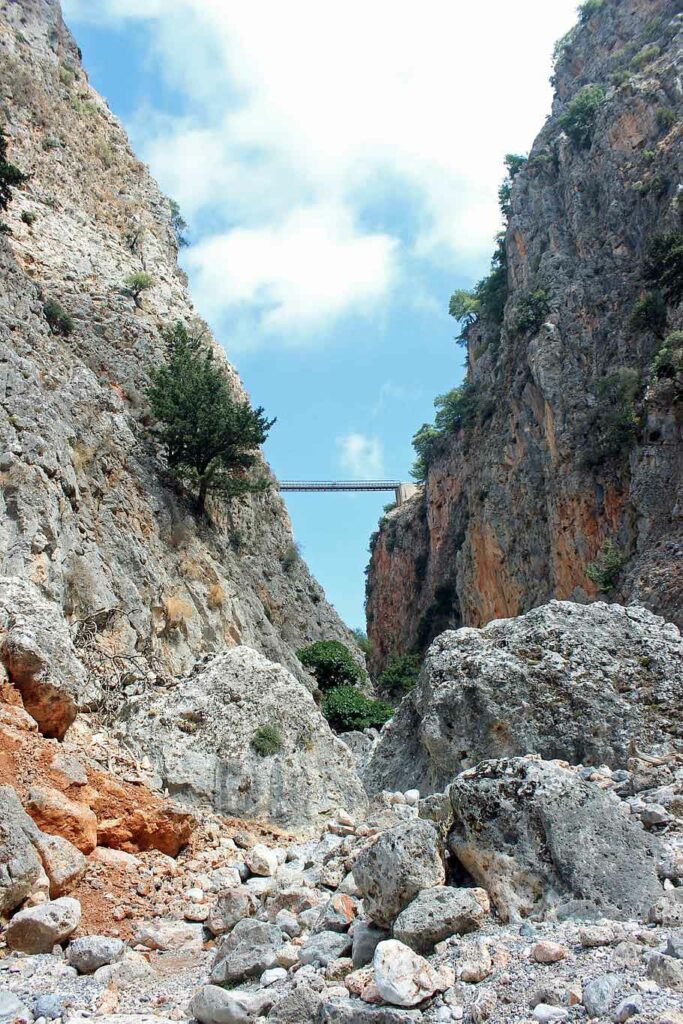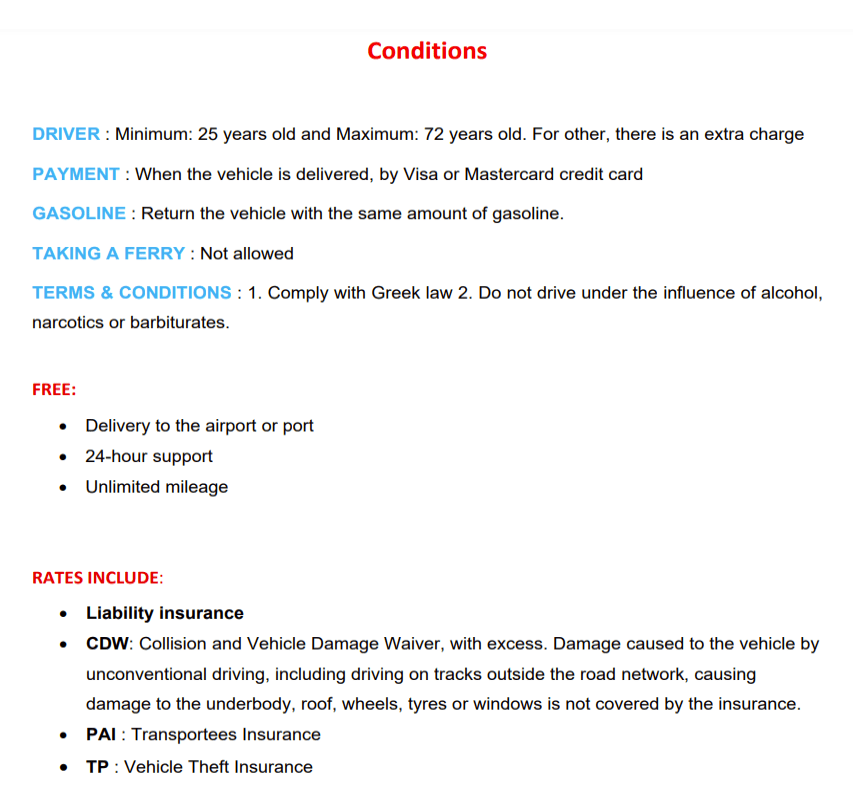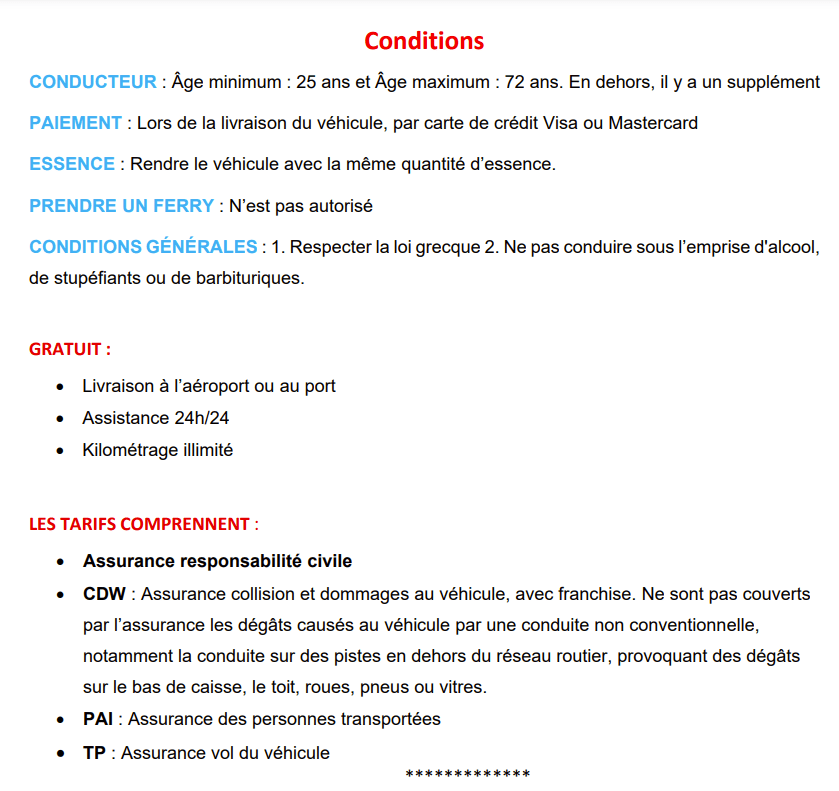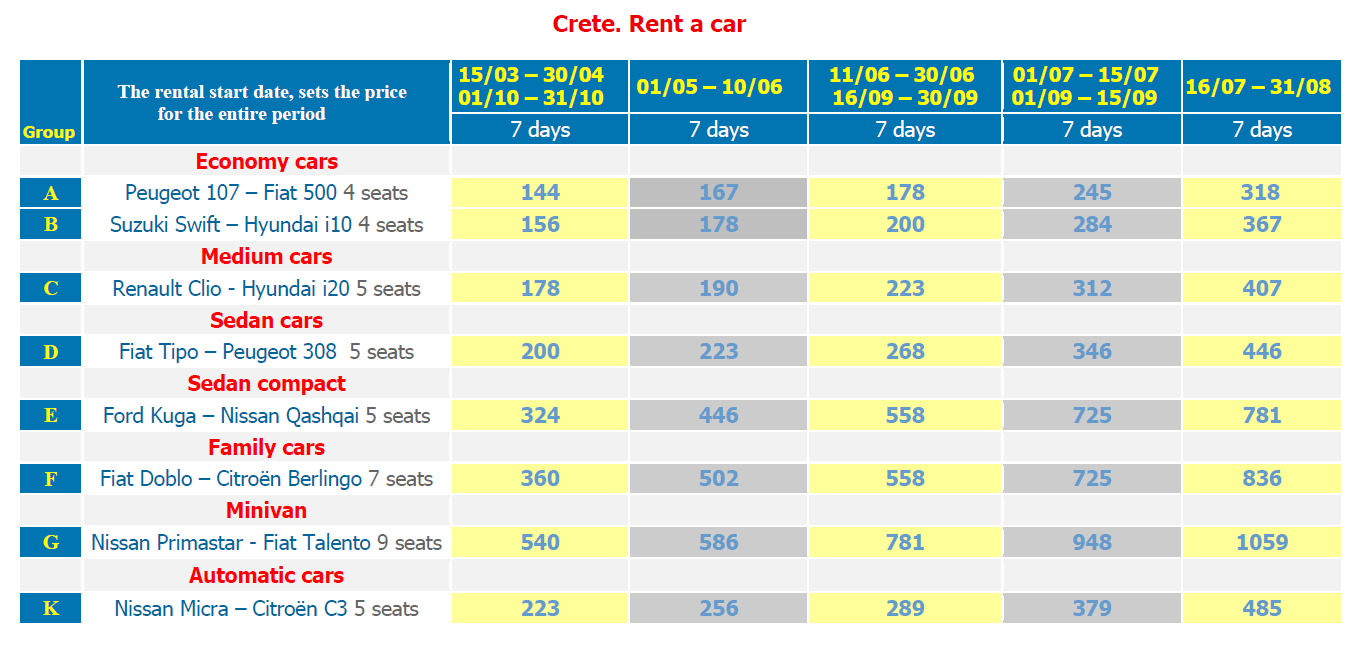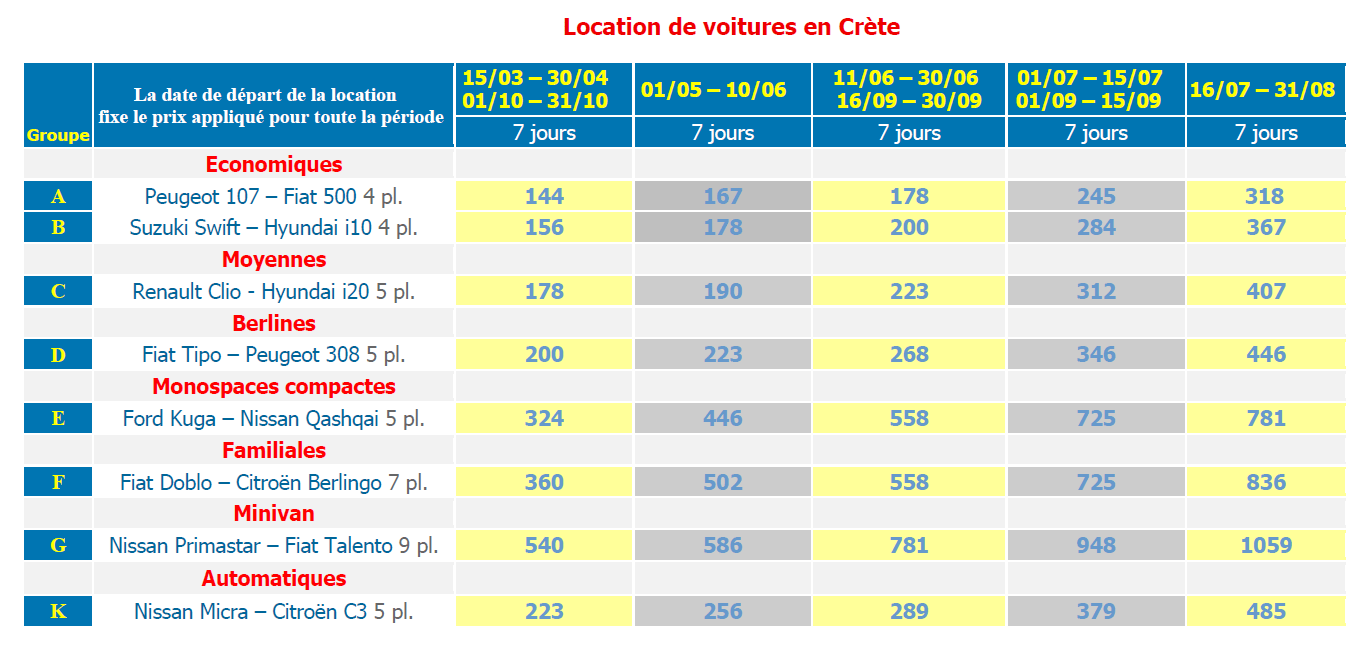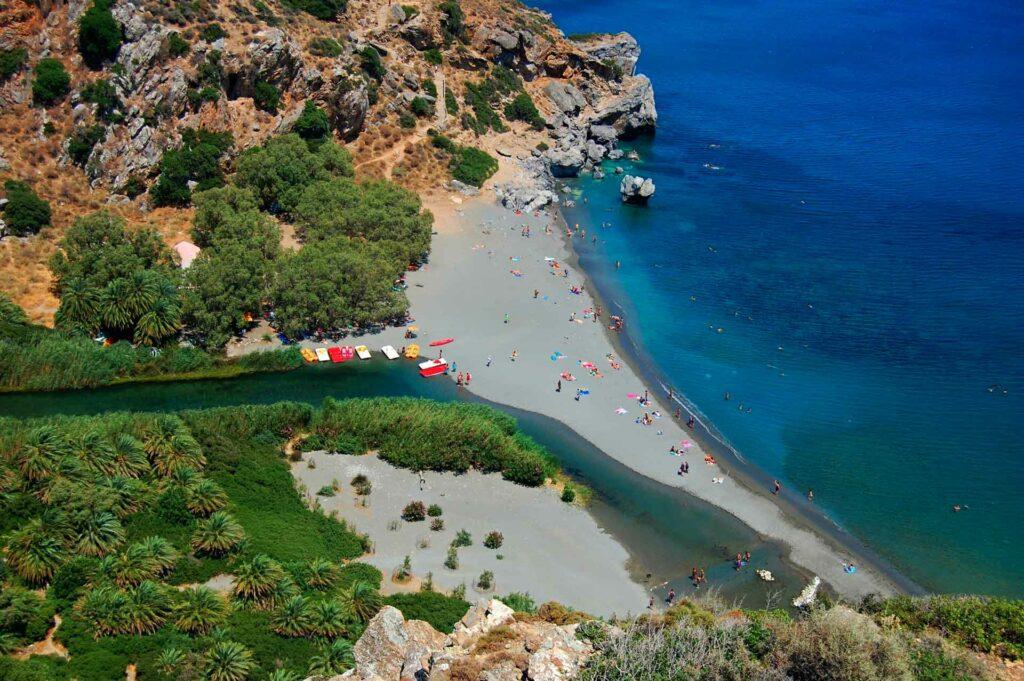Home » BLOG » Cities of Crete » Rethymnon

Rethymnon
Map of the city
To see: The old town of Rethymnon, the port and the Venetian lighthouse. The Venetian fortress, fountains, mosques and minarets. Byzantine, Venetian and Ottoman remains. A whole history...
The Venetian fortress
All the streets in Rethymnon lead to the Square of the Four Martyrs, just in front of the Porta Guora.
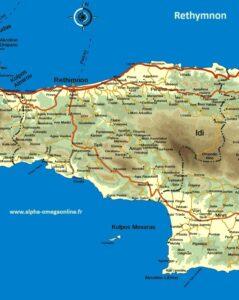
Behind this gate is the old town, with its pedestrian streets, Venetian and Ottoman remains, and, more recently, restaurants, bars and shops for tourists.
If you're staying in the city, leave your bedroom shutters and windows open so you can wake up early and enjoy the fresh morning air and the beautiful colours of dawn.
At this hour, the city awakes from its slumber, peaceful and welcoming. The only people in the Venetian port are the few fishermen mending their nets and the tavern owners sweeping their floors.
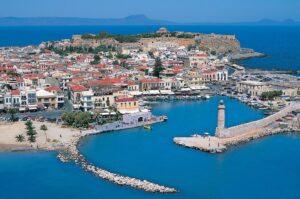
Take a walk around the harbour and then sit down at a café-bar to enjoy a good breakfast or a simple cup of coffee.
The old port has changed very little since the Venetians built it in 1300 in the hope of protecting their galleys. The lighthouse, the area of cobbled streets along the waterfront where people stroll, has remained the same.

And the many houses overlooking the port date back to the time of Venetian domination, between 1204 and 1645.
After the Venetian port, and while it is still early, visit the Venetian fortress, the famous Fortezza. It opens its doors at 8.30 am and until 10 am very few visitors come to break the silence.
Apart from the walls and bastions, which are very well preserved, there is not much to see in the fortress. However, it is worth walking along the wall and the embrasures, and taking a trip back in time to about 350 years ago, when the raging Turks attacked the fortress and the Venetians defended it.
Museums and culture
Just opposite the Fortezza gate, you'll see a large, imposing building.
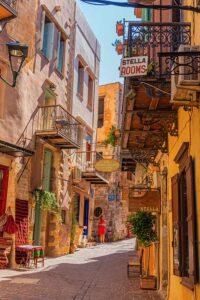
It used to be a Turkish prison, but since 1989 it houses the Archaeological Museum of Rethymnon, probably the most beautiful and best organised in Crete.
On the outside, the building has retained its original imposing appearance. Inside, however, it has been meticulously fitted out to showcase the archaeological treasures on display. Statuettes, jewellery, weapons, tools and pottery from the Neolithic period.
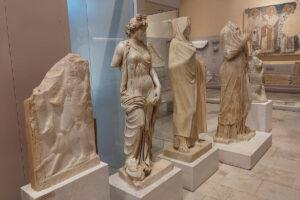
Ritual axes, seal stones, gold jewellery, stone coffins and statuettes of theMinoan period. Glass vases, pottery, statuettes, coins and statues from the ages of périods classical, hellenistic and roman.
If you haven't tired of this pleasant little museum, there's still the Historical and Folklore Museum.
It brings together with great care and sensitivity hundreds of folk art objects, textiles, old photographs, musical instruments, traditional tools and other objects of everyday life.
All presented in a very lively way.
A walk around the town of Rethymnon
A few steps further on is Place Petichaki, at the heart of the town.
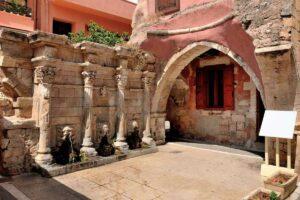
It is home to the famous Rimondi Fountain, a Venetian fountain of historical importance with three lion heads. Water still flows from their mouths, offering exhausted travellers a little respite from the heat of the day.
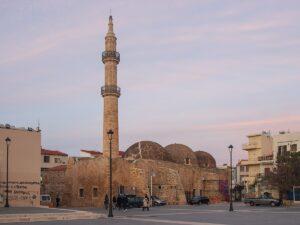
Some of the city's best cafés are concentrated here, and from dawn until late at night they are always packed with young customers.
All around the square, the streets are full of shops, restaurants and cafés and, more than anywhere else in the city, they are bustling with activity.
To the east of Petichaki Square, at the end of Palaiologou Street, is the Venetian Loggia, an elegant late 16th-century building where Venetian lords used to gather to enjoy themselves or do their business.
To the south of Place Petichaki, at the end of Rue Vernardou, is the Nerantze Mosque. It was originally a Venetian church dedicated to Santa Maria.

But in 1657, it was converted into a mosque, with a roof and three magnificent domes, as well as the highest minaret in the city.
In 1925 the building was named 'St Nicholas' Church' - although it was never used as such - and now houses the Rethymnon Conservatory. If you pass by and hear a few notes from a practicing musician, come in and sit down. You'll enjoy quality music in a place designed to create an unusual sensation.

Whichever street you take in the old town, you will be walking through history. Dozens of Venetian and Turkish buildings and monuments and more than seven hundred Venetian facades are scattered in every alley and street corner.
Buildings that have stood the test of time and now house the restaurant where you will eat, the bar where you will spend the evening and the hotel where you will rest. (for the buses, see KTEL)
The beach
Working slowly over millions of years, Mother Nature has made this part of Crete one of the most beautiful sandy beaches on the island, extending over an area of 12 km.
Working feverishly for twenty years, the modern Homo Touristicus who inhabits the island has adorned this beach with countless hotels, restaurants, bars, discos, rooms for rent, car rental offices and other tourist businesses that he has planted along the coast. Some people call it "development".
see our pageRethymnon – Top 103 and the map of Rethymnon area
Rent a car in Greece: Crete (Heraklion, Chania, Rethymnon, Agios Nikolaos) – Athens – Rhodes – Corfu – Mykonos – Santorini – Thessaloniki – Preveza/Aktion/Lefkada – Patras/Araxos – Kalamata – Paros – Syros – Kos – Naxos – Lesbos – Thassos – Zakynthos/Zante

